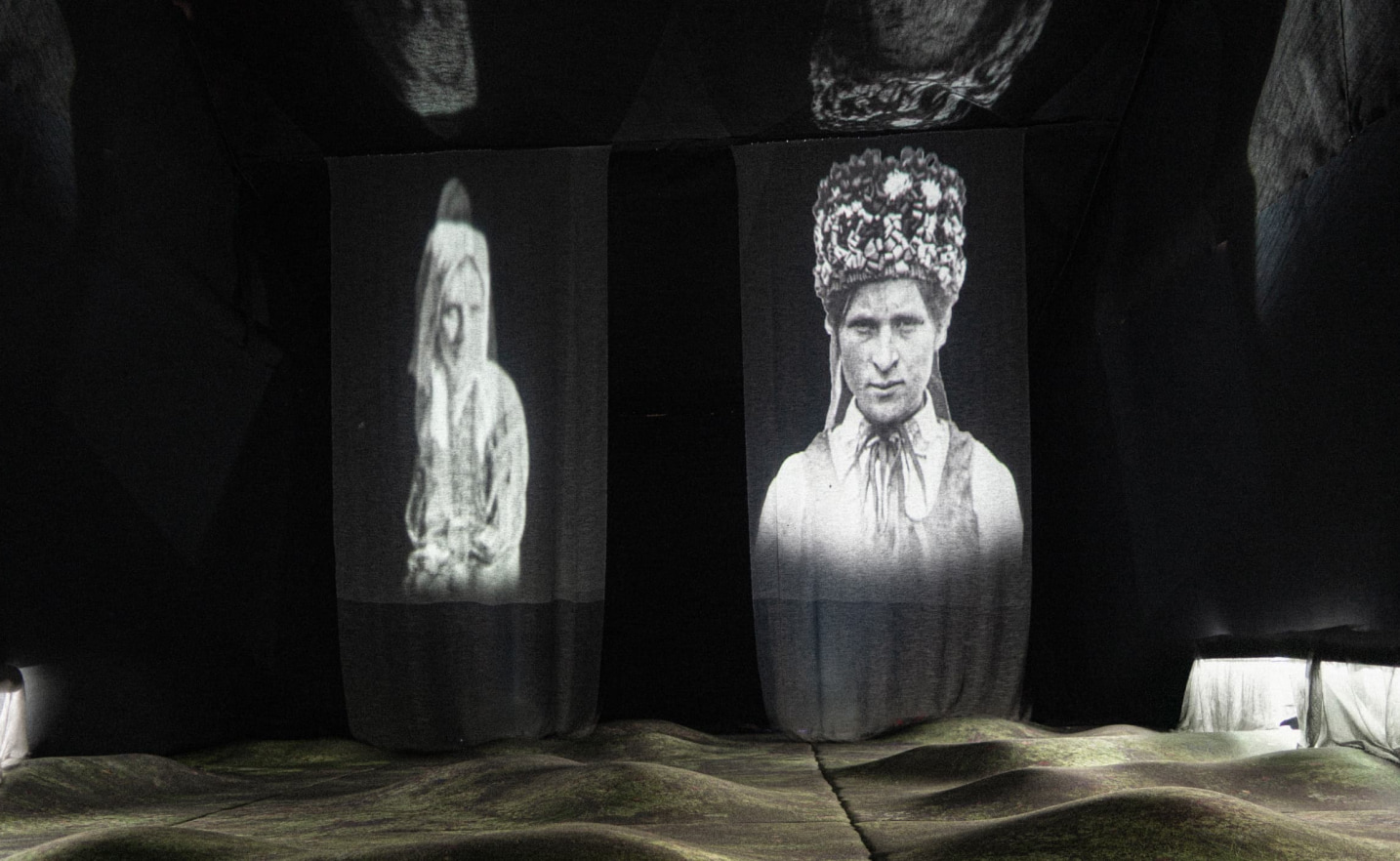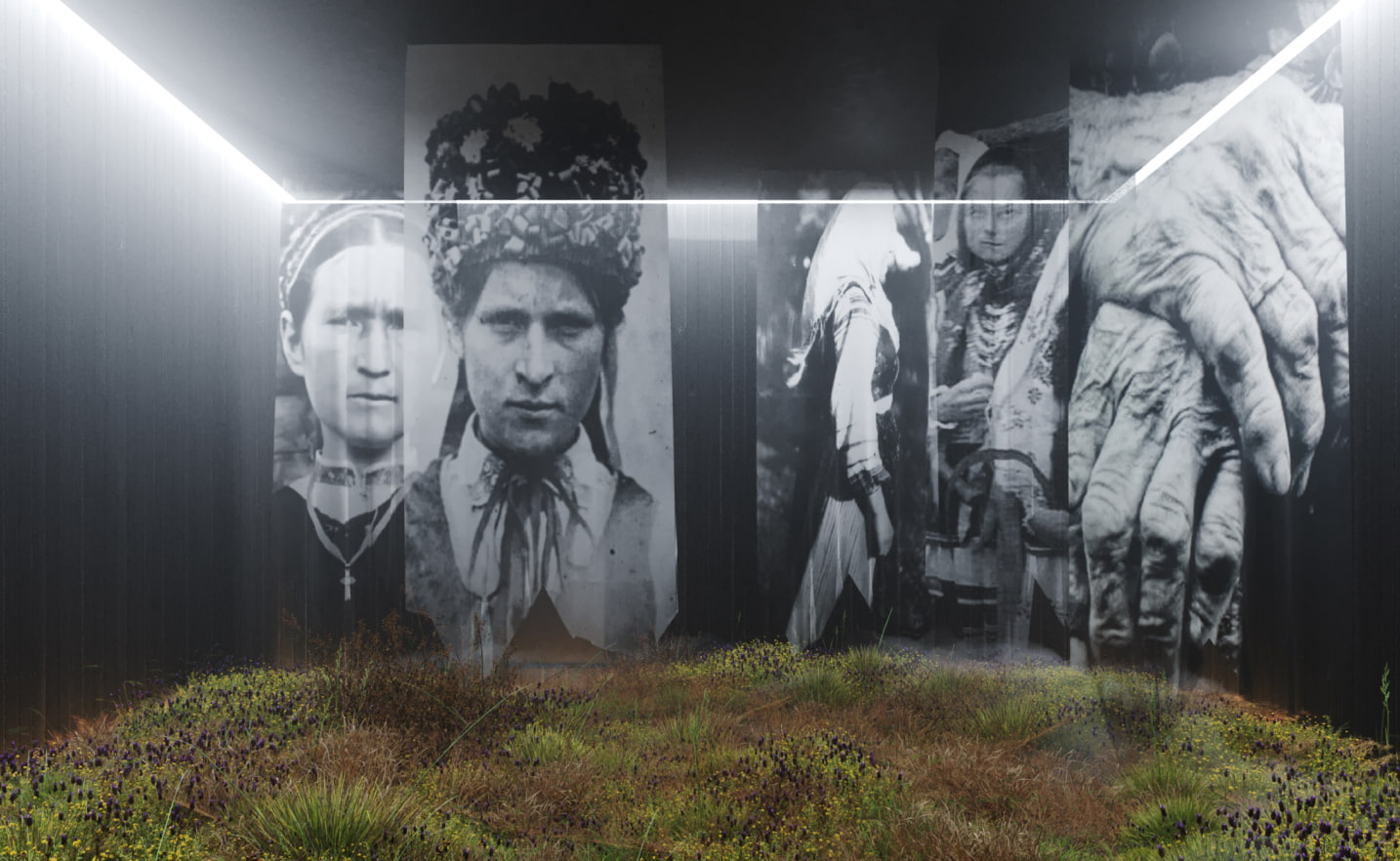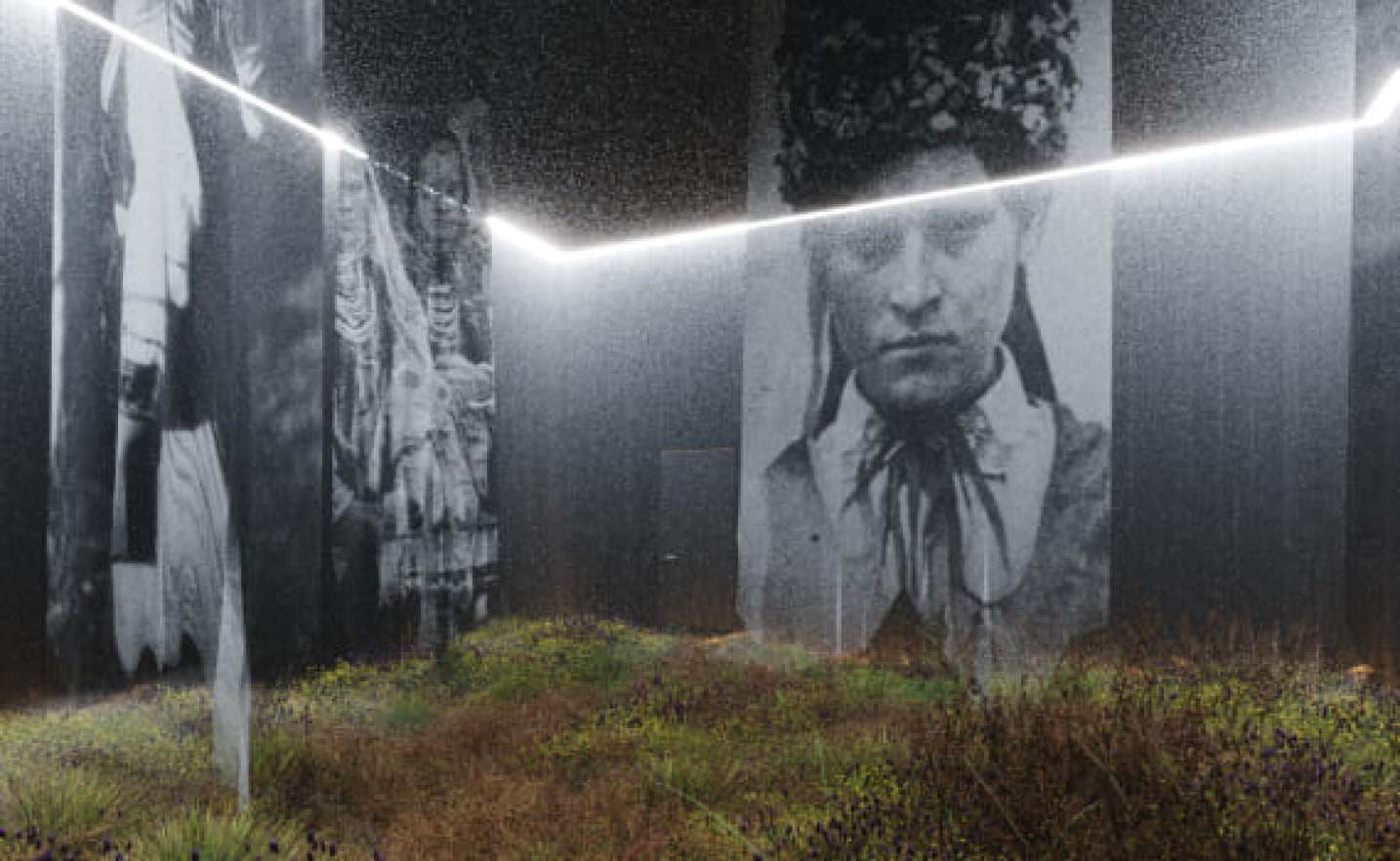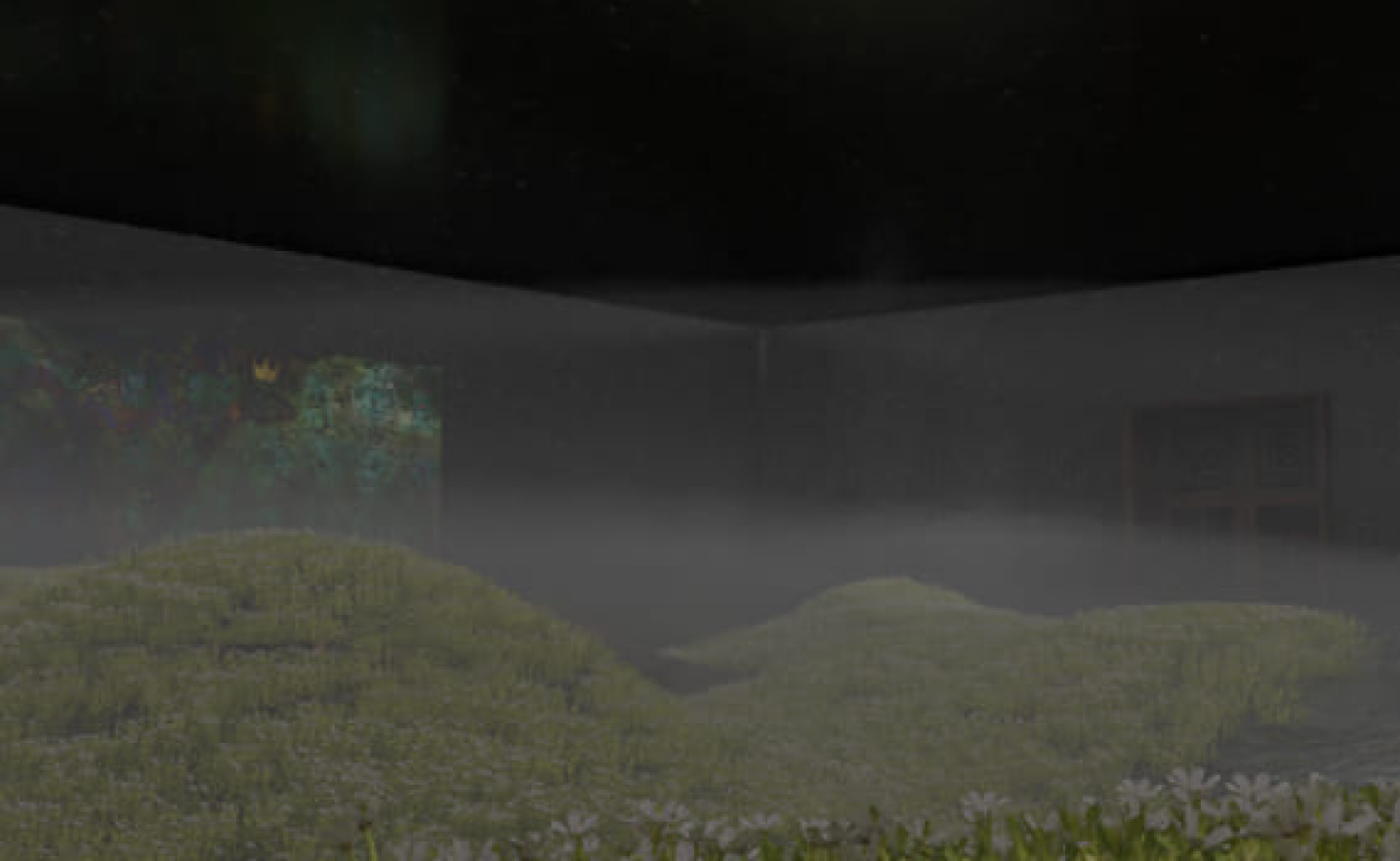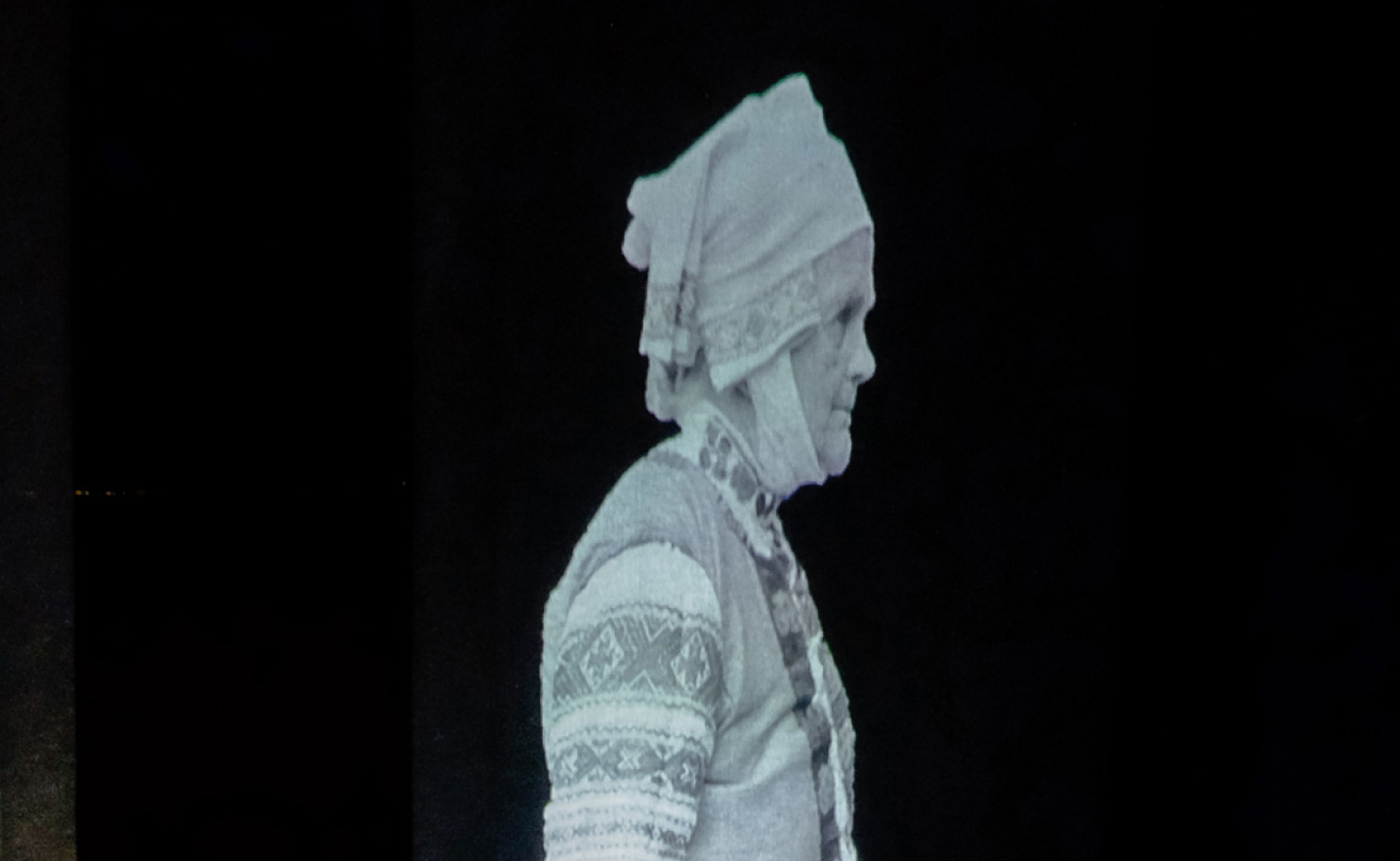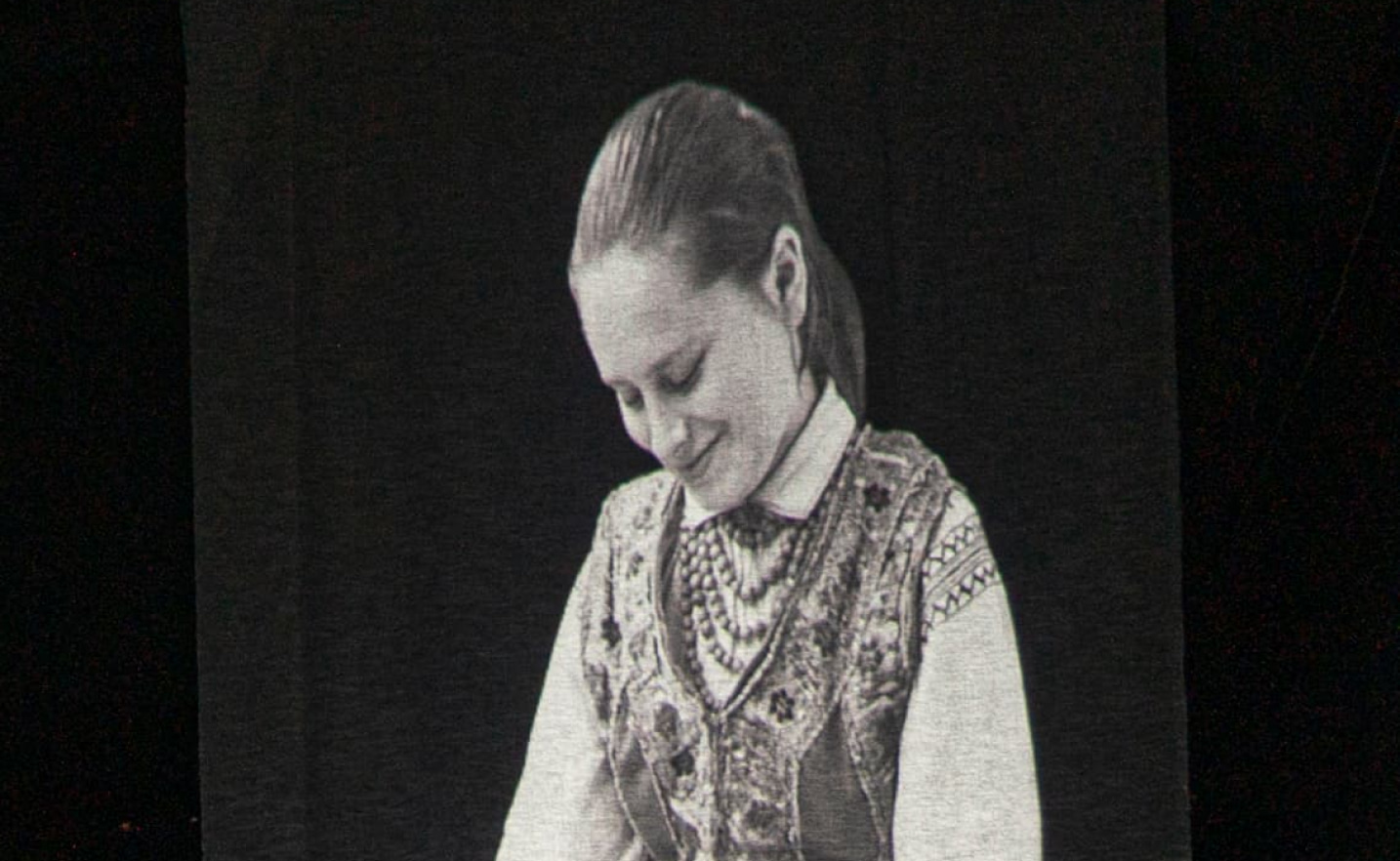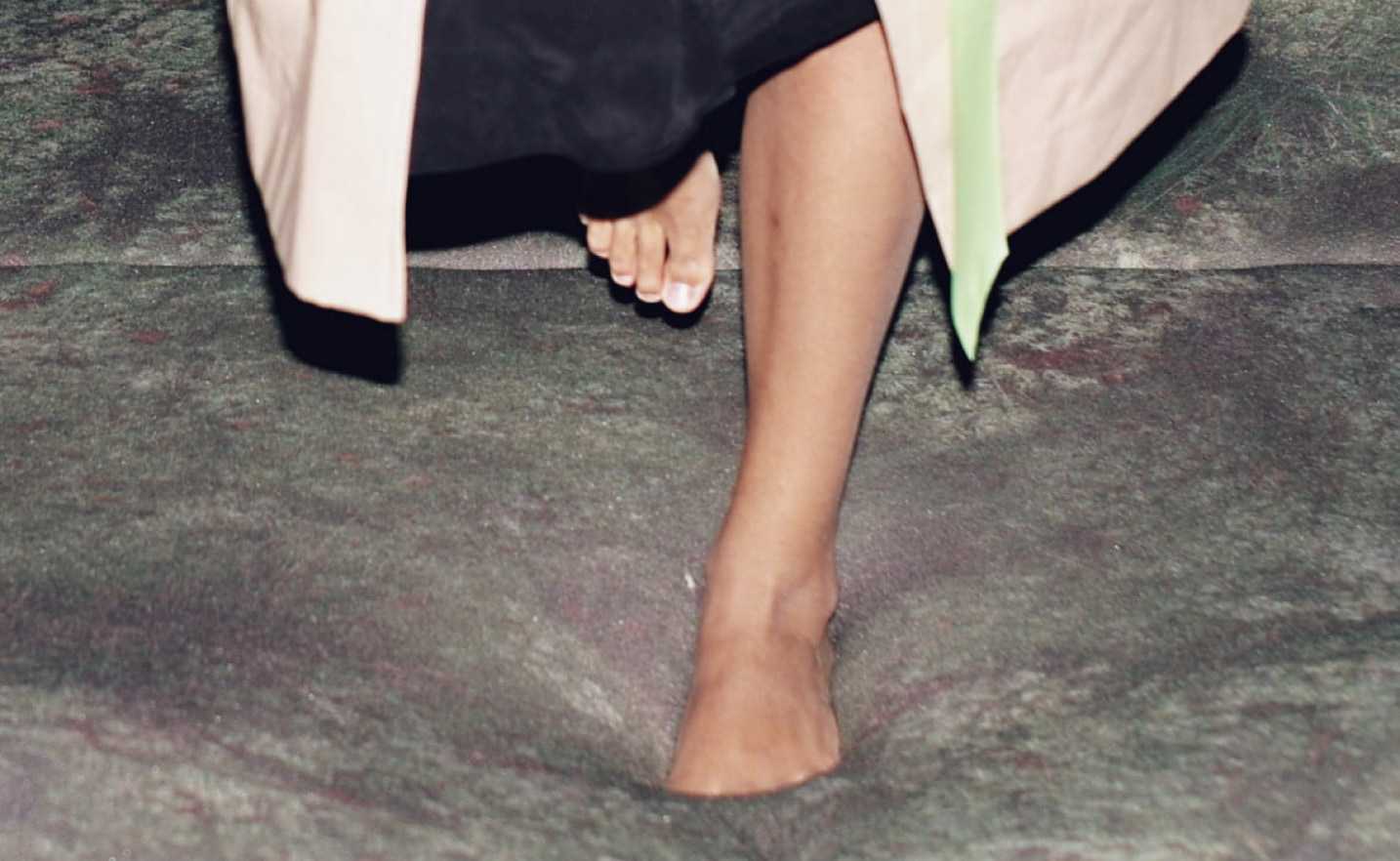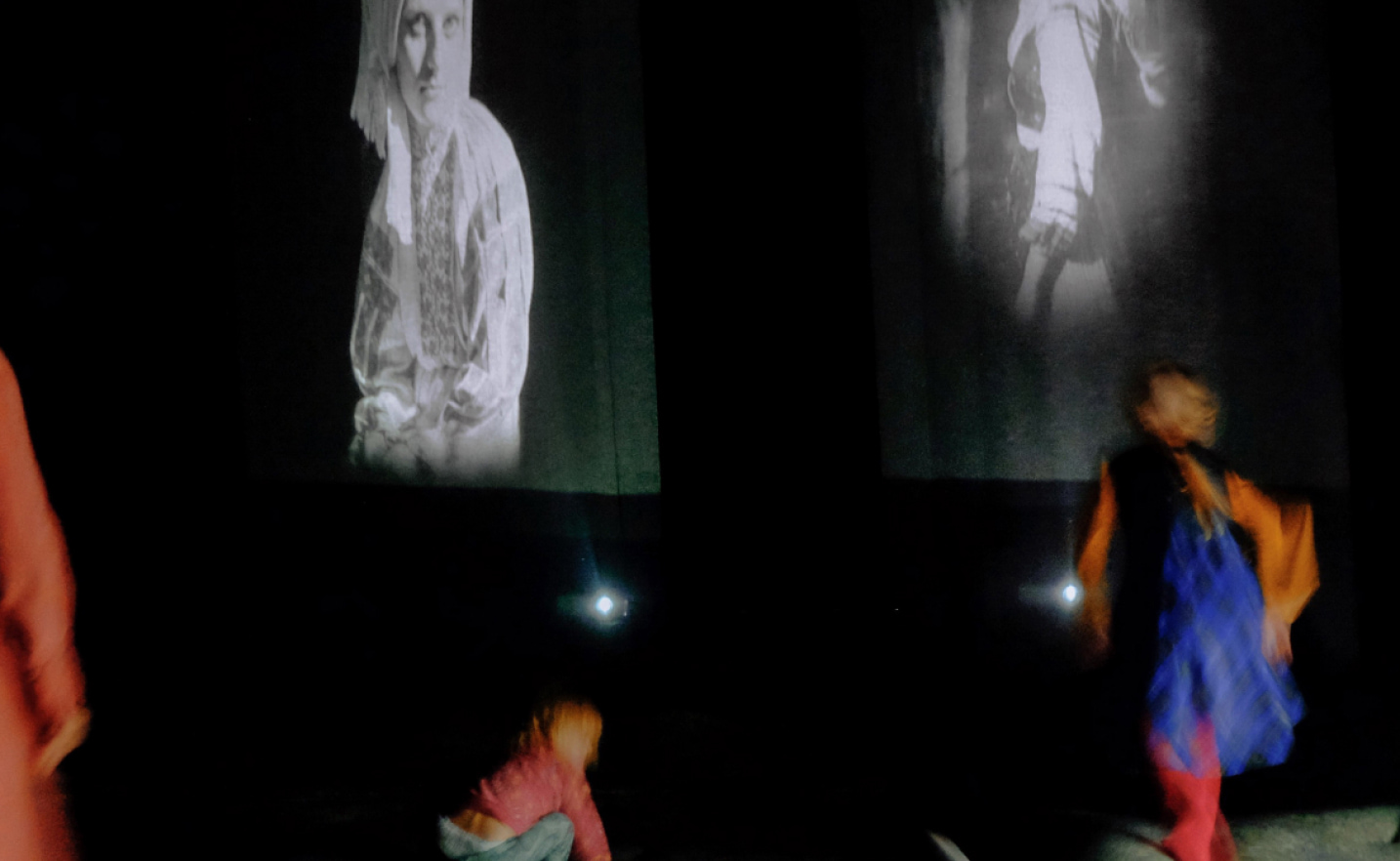Drygva. Breathe In Breathe Out
Maria Gvardeitseva
Daugavpils, Latvia, 2022
The swamps, older than human settlement, are rich in folklore, with tales of dragons, magic flowers, and hidden castles. These endangered marshlands are seen as the last bastions of true Belarusian identity, which the government has systematically eroded. The installation emphasises the historical connection between marshes and Belarusian culture, particularly highlighting the underrepresentation of women in this narrative.
To address this, Maria highlights Belarusian women through a series of cloth portraits, paying tribute to figures like sculptor Helena Skyrmunt, artist Alena Kish, and other craftswomen and healers. These women, like guiding fireflies, illuminate the marshland universe, symbolizing resilience and the crucial role of women in preserving Belarusian heritage
